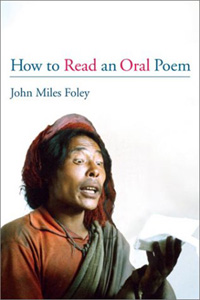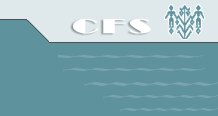 Though
they appear diverse, Homer's Odyssey and slam poetry from contemporary
urban America draw from the well of oral tradition. This unique,
practical, and user-friendly guide explores the cultural contexts
of verbal art to provide more-than-textual methods for understanding
the structure, principles, and social applications of oral poetry. Though
they appear diverse, Homer's Odyssey and slam poetry from contemporary
urban America draw from the well of oral tradition. This unique,
practical, and user-friendly guide explores the cultural contexts
of verbal art to provide more-than-textual methods for understanding
the structure, principles, and social applications of oral poetry.
Drawing on dozens of examples, including a North American
slam poet, a Tibetan paper-singer, a South African praise-poet,
and an ancient Greek bard, John Miles Foley shows that although
oral poetry long predates the invention of writing, it continues
to be a vital culture-making and communications tool in societies
all over the world. Based on fieldwork and archival research
on epics, folktales, lyrics, laments, charms, and other oral
traditions, How to Read an Oral Poem answers the questions,
What is oral poetry? How does it work? What is reading, literally
and figuratively?
This accessible and engaging work is enhanced by audio
and video examples of oral poetry, which are available at
http://www.oraltradition.org. The book can also be used as
companion volume to Foley's Teaching Oral Traditions.
John Miles Foley is Curators' and Byler Professor of Classical
Studies and English at the University of Missouri and director
of its Center for Studies in Oral Tradition. He is the author
of Homer's Traditional Art, The Singer of Tales in Performance,
Immanent Art, Teaching Oral Traditions, and numerous scholarly
articles.
--- --- ---
Welcome to the e-companion to How to Read an Oral Poem
by John Miles Foley (http://www.press.uillinois.edu/f02/foley.html).
This resource provides photo, audio, video, and bibliographic
support for the various chapters or "words" in that
book. The site has been designed to offer examples and additional
information that are best presented via the web, the kinds
of materials that don't fit comfortably between the covers
of a conventional book. In this sense we're trying to take
advantage of both media -- book and web -- and to underline
the kinship between oral poetry and the Internet (a subject
discussed in HROP).
A few tips on how to use what you'll find here. To start,
you can navigate most successfully with the book in one hand
and your mouse in the other. The various materials can be
located by clicking first on Table of Contents and then following
the links. The individual items available include: a complete
table of contents, photographs to illustrate the Four Scenarios,
an audio clip of lines from Beowulf in the original Old English
(to accompany the First Word), a video of Lynne Procope performing
her slam poem, "elemental woman" (to accompany the
Fourth Word), photos of slam poets performing at the Nuyorican
(to accompany the Seventh Word), an audio recording of a healing
charm from the Former Yugoslavia (with text and English translation,
to accompany the Eighth Word), an original-language text and
English translation of a healing charm (to accompany the Eighth
Word), and an audio recording of The Widow Jana, an epic from
the Former Yugoslavia (also with text and English translation,
to accompany the Eighth Word). In addition, clicking on Annotated
Bibliography will bring you a version of HROP's bibliography
with each book and article summarized in a few sentences.
So much for the basic content of the e-companion. We will
be adding materials and links as appropriate in the future,
seeking to make the site an ever more useful resource for
those interested in how to read an oral poem.
Contents vii
Prologue xi
Pronunciation Key xvii
Four Scenarios 1
#1. A Tibetan paper-singer
#2. A North American slam poet
#3. A South African praise-poet
#4. An Ancient Greek bard
What the Oral Poets Say (in Their Own "Words")
11
Mujo Kukuruzovic
Salko Moric
Ibro Basic
What's in a "Word"?
First Word: What is Oral Poetry? 22
Media technologies and our species-year
Oral tradition and the present day
Media bias
Explaining the title: Four questions
What is oral poetry?
Step 1. Opening up the poetic line
Step 2. Opening up the poetic genre
Step 3. Opening up the oral-written dichotomy
Step 4. Opening up media dynamics Oral Performance
Voiced texts
Voices from the Past
Written Oral Poems
Second Word: Contexts and Reading 58
Detachable speech?
What is an oral poem?
What is reading?
Autonomous versus ideological literacy
The complexity of reading: three cases
Foreign language in an Indonesian village
Sonorous texts in Tibet
An ancient library of Hebrew scriptures
Reading Bellerophon's tablet
Third Word: Being there: Performance Theory 79
What do we mean by how?
Ways of reading
Three perspectives
How Performance Theory works
What difference does performance make?
Keys to performance Special codes
Figurative language
Parallelism
Special formulae
Appeals to tradition
Disclaimer of performance
Fourth Word: Verbal art on its own terms: Ethnopoetics 95
Does oral poetry need to be read differently?
Reading, representing, and reperforming
Scoring oral poetry
Voiced Texts: Slam poetry
Voices from the Past: Beowulf
Fifth Word: Traditional implications: Immanent Art 109
What difference does repetition make?
The great experiment
From structure to meaning
The model
Register, Performance arena, Communicative economy
From model to application
Dovetailing: Word-power
Sixth Word: A Poor Reader's Almanac 125
Why *proverbs*?
An almanac of *proverbs*
#1. Oral poetry works like language, only more so.
#2. Oralpoetry is a very plural noun.
#3. Performance is the enabling event, tradition is the
context for that event.
#4. The art of oral poetry emerges through rather than
in spite of its special language.
#5. The best companion for reading oral poetry in an
unpublished dictionary.
#6. The play's the thing (and not the script).
#7. Repetition is the symptom, not the disease.
#8. Composition and reception are two sides of the same
coin.
#9. Read both behind and between the signs.
#10. True diversity demands diversity in frame of reference.
Seventh Word: Reading Some Oral Poems 146
Case studies and the grid
Zuni and Kaqchikel Mayan oral poetry
Slam poetry
At the Nuyorican
Slam as performance
The Odyssey
The Siri Epic
The Song of Roland
A repertoire for reading oral poetry
Eighth Word: An Ecology of South Slavic Oral Poetry 188
Healing the body: Magical charms
Healing the spirit: Funeral laments
Tracking identity: Genealogies
Living the heritage: Epics
Christian epic: Marko, Kosovo, The Widow Jana
Moslem epic
Speaking in poetry: An unclassified species
A diverse ecology
Post-Script 219
Pre-script, para-script, post-script
Pathways
Cyber-editions and e-readers
Bibliography 227
Index 243
"How to Read an Oral Poem sets out to provide guidance
in how to perform a very tricky intellectual exercise: the
competent 'reading' of texts that exist in oral performance.
It engages all the most pertinent scholarship with mastery
and understanding."
-- Barre Toelken, author of Morning Dew and Roses: Nuance,
Metaphor, and Meaning in Folksong and The Dynamics of Folklore
"John Miles Foley is unrivaled in his familiarity with
the fascinating range of worldwide oral traditions. . . .
A lucid and passionate introduction to oral poetics."
-- Richard Peter Martin, Isabelle Raubitschek Professor
of Classics at Stanford University
University of Illinois Press
October 2002
280 pages. 6 x 9 inches. 6 photographs.
Cloth, ISBN 0-252-02770-1. $44.95
Paper, ISBN 0-252-07082-8. $19.95
Poetry / Comparative Literature
|





